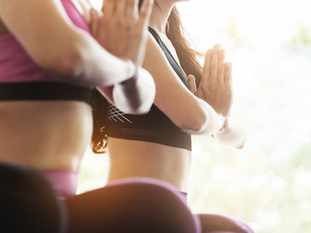
The Secret Pilates Technique Most Instructors Forget to Teach - Lateral Breathing
Jan 30
2 min read
1
12
0
The Power of Breath: Understanding and Teaching Lateral Breathing in Pilates
Breathing is the foundation of Pilates, influencing movement efficiency, core activation, and overall body control. Among the various breathing techniques, lateral breathing is a key component that allows for deep oxygenation without compromising core engagement. As an instructor, understanding and teaching this technique can greatly enhance your students’ practice.

The Importance of Correct Breathing Techniques
Breath control is integral to Pilates, impacting posture, movement precision, and muscular engagement. Correct breathing helps:
Increase Oxygen Intake: Deep, controlled breaths increase oxygen supply to the muscles, promoting endurance and efficiency.
Expel Toxins: Carbon dioxide is removed with full exhales.
Facilitate core engagement: Unlike belly breathing, lateral breathing supports deep core activation without unnecessary abdominal distension.
Reduce tension and mobilise the thoracic spine: Proper breathing patterns can calm the nervous system, aiding focus and relaxation and encouraging movement in the ribcage and thoracic spine.
Improve movement flow: Synchronising breath with movement optimises coordination control and flow.
What is Lateral Breathing?
Lateral breathing, or intercostal breathing, is a technique where the breath expands the ribcage laterally rather than filling the belly. This method ensures the deep core muscles remain engaged while allowing optimal oxygen intake.
To perform lateral breathing:
Inhale through the nose, feeling the ribs expand outward and sideways.
Keep the abdominals gently engaged, avoiding excessive rise in the chest or belly.
Exhale through the mouth, allowing the ribs to contract back toward the spine while deepening core activation.
Exercise to Teach Lateral Breathing in Class
A simple yet effective exercise to teach lateral breathing is Scarf Breathing. (Works just as effectively using a resistance band).
How to Teach It:
Seated Position: Have your students sit tall on their sit bones, wrapping a resistance band around their lower ribcage and holding the ends lightly.
Inhale Through the Nose: Encourage them to breathe in, feeling their ribs expand outward against the resistance of the band.
Maintain Core Engagement: Guide them to keep the lower belly gently drawn in to avoid excessive abdominal movement.
Exhale Through the Mouth: Cue them to release the breath slowly, feeling the ribs return to their starting position and the band gently loosen.
Repeat for 5-10 breaths, focusing on controlled expansion and contraction.
Bringing Lateral Breathing Into Your Classes
Start every session with a breath awareness exercise to set the tone for mindful movement.
Cue breath control during exercises, reminding students to maintain lateral expansion.
Use hands-on feedback (if appropriate) to help students feel rib movement.
Incorporate breath-focused drills in warm-ups and cooldowns to reinforce the technique.
Lateral breathing is a powerful yet often overlooked technique that can transform your students’ Pilates practice. As an instructor, teaching this method provides a valuable tool for improving core engagement, breath control, and movement efficiency. However, be mindful that some students may take time to grasp this technique fully. Encourage patience and practice, reinforcing the importance of consistency to unlock the full benefits of lateral breathing.




